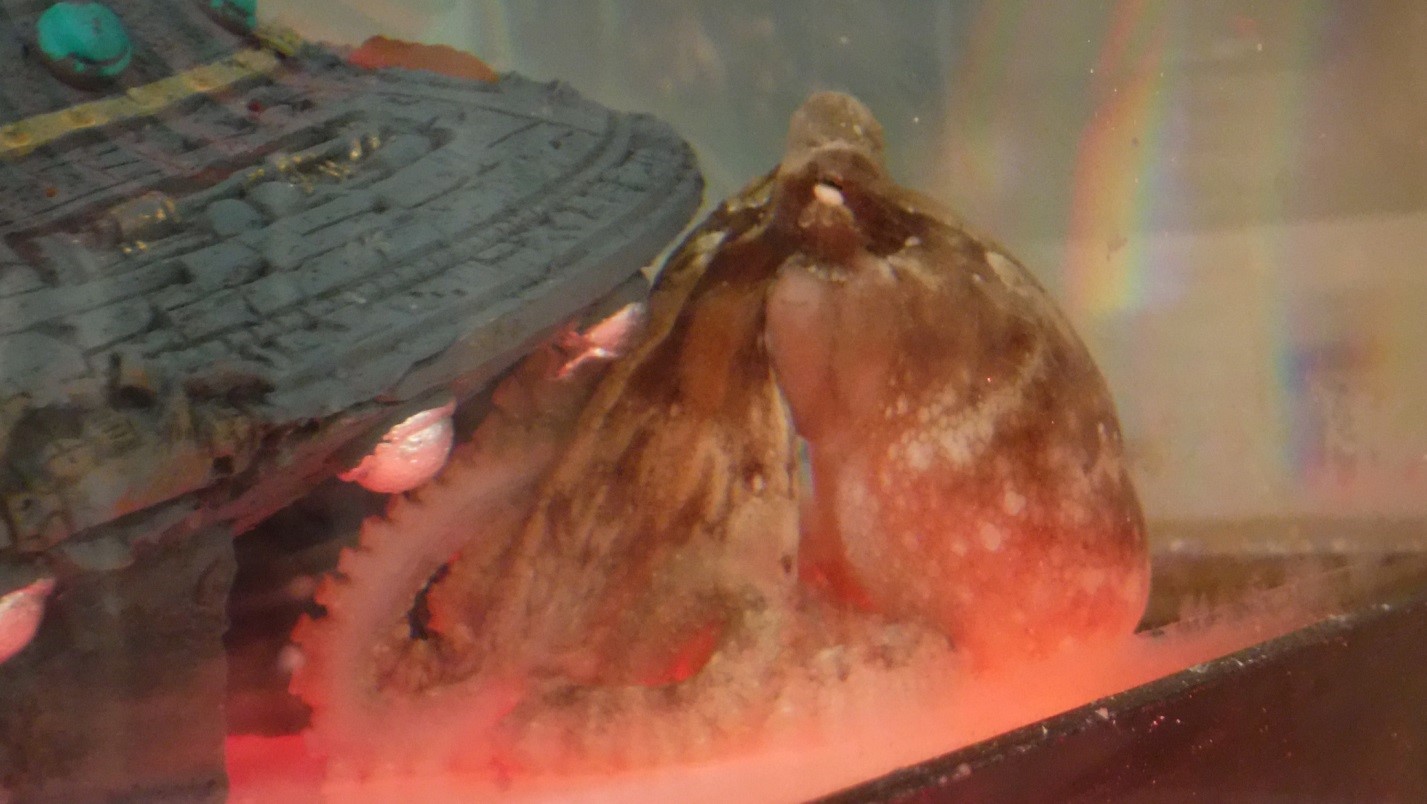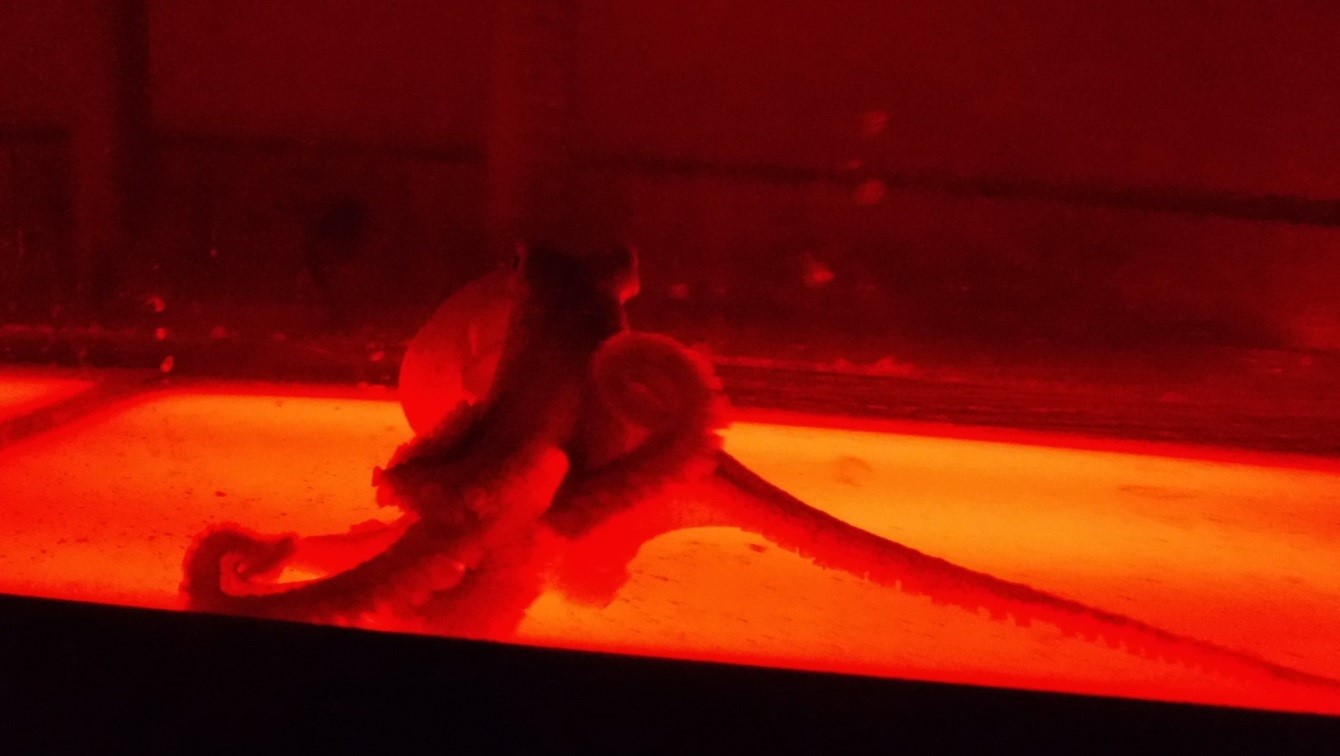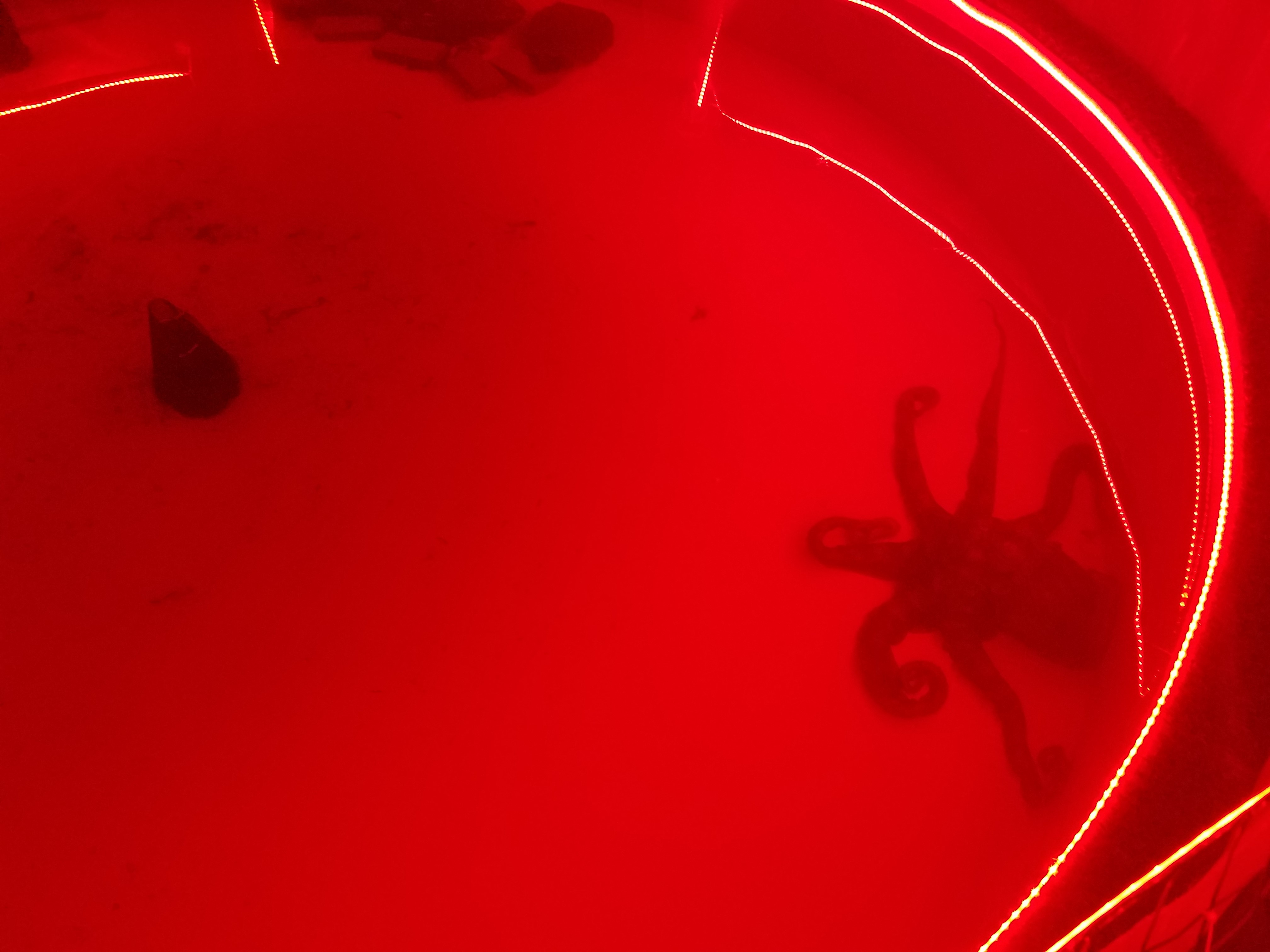 |
|
|
Fall 2017 Computational strategies underlying collective decision making in the arms of Octopus: An alternative model for cognitionBy Dominic M. Sivitilli 
The ancient evolutionary pathway by which the octopus converged on a cognitive capacity to rival that of vertebrates has led to extremely divergent neural architecture. Unlike the highly centralized nervous system of the vertebrates, that of the octopus is largely peripheral, with most neurons existing in its eight flexible arms. Here, the nervous system takes the form of a chain of neural clusters, or ganglia, running in parallel to the octopus’ suckers, with each ganglion processing the input from the tens of thousands of sensory receptors from the adjacent sucker. By outsourcing a large degree of motor and sensory processing into localized semi-autonomous neural pathways within these chains, the octopus can process this massive amount of sensory information in parallel while relieving the brain of much of the necessary computational burden to respond accordingly. With but a highly abstracted representation of the world, the brain appears to generate a limited number of global commands to the arms, and exactly how these commands are modified to fit the conditions of the environment seems to be determined largely by local integration. When an arm is removed or its connection to the brain severed, the arm will move freely, respond to touch, and even recoil from noxious stimuli. This autonomous behavior suggests that the arms are inhibited when attached to the brain, and by selectively removing inhibition of certain peripheral neural pathways, the brain allows the arms to execute behaviors while the other pathways within the arms remain silenced. The large degree of information from the suckers is then consulted to adjust the automated motor response to the immediate and acute representation of the world. The infamous cunning of the octopus therefore appears to be an emergent property of the highly independent divisions of its nervous system working in concert. The key to understanding their intelligence, therefore, exists in the strategies they are using to coordinate this highly diffuse system. My team collects the local Pacific Red Octopus (Octopus rubescens) from the Puget Sound using SCUBA, and with techniques provided by the Gire Lab, we employ a computer vision algorithm to track the two-dimensional projection of the octopus during foraging behavior. This approach allows us to catalogue not just the behavioral profiles of the entire animal, but that of each arm simultaneously. By then characterizing correlations in movement pattern and symmetry between arms as a function of the sensory information available to the octopus, we can begin to model the flow of information in this system that allows the octopus to coordinate its arms in response to controlled exposure to various environmental conditions The relocation of this paradigm to Friday Harbor Laboratories during the summer of 2017 marked an important transition. The facilities at Friday Harbor allowed us to work at a much larger scale. The Giant Pacific Octopus (Enteroctopus dofleini>), the largest species of octopus known, became our model. We replicated our experimental setup in an 8,700 liter (2,300 gallon) tank, allowing us to conduct a cross-species comparative study on the same breadth of behaviors at the same resolution. Now, we are able to generalize our computational model to multiple species. Techniques are currently in development that will allow us to record neural activity in the octopus during the various behaviors we have been able to characterize. In combination with our tracking algorithm, we can then reliably characterize signature neural patterns associated with distinct behaviors in the arms, with the only variability within a behavior being due to the local sensory input modifying the motor output generated within each arm, which can be accounted for through controlled exposure to tactile and chemical stimuli. More importantly, these techniques will also allow us to record activity between the arms, where a neural fiber that links the arms into a ring serves as a path by which information can bypass the brain. Our research seeks to study the mechanisms underlying a convergent case of intelligence. Our large scale, high resolution characterization of the computational strategies underlying arm coordination in the octopus (the means by which they process the vast information from their peripheral nervous system and control this distributed semi-autonomous network through localized sensory feedback) is providing an alternative model for cognition to that which serves as the basis for intelligence as we understand it. We seek to broaden our perspective and reevaluate our understanding of cognition across the diversity of forms that evolution has made of the ancestral nervous system beyond the vertebrate model. The long, separate evolution of the octopus toward intelligence means that we are looking at a psychology entirely different from our own, and by doing so, we are beginning to engage the question of the form and evolution of the mind beyond Earth, and of other worlds of thought entirely. 

Figure 1 & 2: O. rubescens  Figure 3: E. dofleini  Figure 4: E. dofleini in tracking space About the author: With undergraduate degrees in Psychology and Biology, Dominic Sivitilli is working toward his PhD in Psychology and Astrobiology. He is studying the way the octopus uses its intelligence. |
|
